Dean Radin investigates phenomena in parapsychology. Following a bachelor and master's degree in electrical engineering and a PhD in educational psychology Radin worked at Bell Labs, as a researcher at Princeton University and the University of Edinburgh, and was a faculty member at University of Nevada, Las Vegas. He then became Chief Scientist at the Institute of Noetic Sciences (IONS) in Petaluma, California, USA, later becoming the president of the Parapsychological Association. He is also co-editor-in-chief of the journal Explore: The Journal of Science and Healing. Radin's ideas and work have been criticized by scientists and philosophers skeptical of paranormal claims. The review of Radin's first book, The Conscious Universe, that appeared in Nature charged that Radin ignored the known hoaxes in the field, made statistical errors and ignored plausible non-paranormal explanations for parapsychological data.
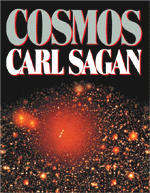
Cosmos is a popular science book written by astronomer and Pulitzer Prize-winning author Carl Sagan. It was published in 1980 as a companion piece to the PBS mini-series Cosmos: A Personal Voyage with which it was co-developed and intended to complement. Each of the book's 13 illustrated chapters corresponds to one of the 13 episodes of the television series. Just a few of the ideas explored in Cosmos include the history and mutual development of science and civilization, the nature of the Universe, human and robotic space exploration, the inner workings of the cell and the DNA that controls it, and the dangers and future implications of nuclear war. One of Sagan's main purposes for both the book and the television series was to explain complex scientific ideas in a way that anyone interested in learning can understand. Sagan also believed the television was one of the greatest teaching tools ever invented, so he wished to capitalize on his chance to educate the world. Spurred in part by the popularity of the TV series, Cosmos spent 50 weeks on the Publishers Weekly best-sellers list and 70 weeks on the New York Times Best Seller list to become the best-selling science book ever published at the time. In 1981, it received the Hugo Award for Best Non-Fiction Book. The unprecedented success of Cosmos ushered in a dramatic increase in visibility for science-themed literature. The success of the book also served to jumpstart Sagan's literary career. The sequel to Cosmos is Pale Blue Dot: A Vision of the Human Future in Space (1994).

Parasite Rex: Inside the Bizarre World of Nature's Most Dangerous Creatures is a nonfiction book by Carl Zimmer that was published by Free Press in 2000. The book discusses the history of parasites on Earth and how the field and study of parasitology formed, along with a look at the most dangerous parasites ever found in nature. A special paperback edition was released in March 2011 for the tenth anniversary of the book's publishing, including a new epilogue written by Zimmer. Signed bookplates were also given to fans that sent in a photo of themselves with a copy of the special edition.
Karen Karbo is an American novelist, non-fiction writer and journalist.
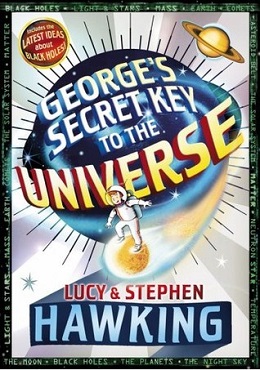
George's Secret Key to the Universe is a 2007 children's book written by Lucy and Stephen Hawking with Christophe Galfard. Upon its release, the book received mixed reviews, and was followed by five sequels, George's Cosmic Treasure Hunt in 2009, George and the Big Bang in 2011, George and the Unbreakable Code in 2014 and George and the Blue Moon in 2016 and George and the Ship of Time in 2018.
Red Hen Press is an American non-profit press located in Pasadena, California, and specializing in the publication of poetry, literary fiction, and nonfiction. The press is a member of the Community of Literary Magazines and Presses, and was a finalist for the 2013 AWP Small Press Publisher Award. The press has been featured in Publishers Weekly,Kirkus Reviews, and Independent Publisher.

Roland Merullo is an American author who writes novels, essays and memoir. His best-known works are the novels Breakfast with Buddha, In Revere, In Those Days, A Little Love Story, Revere Beach Boulevard and the memoir Revere Beach Elegy. His books have been translated into Spanish, Portuguese, Korean, German, Chinese, Turkish, Bulgarian, Croatian, Slovenian, Czech and Italian.
The Nick Stone Missions are a series of action thriller novels written by author Andy McNab, based on his own experiences in the SAS. The first book in the series, Remote Control was published in February 1998 by Transworld Publishers under their Corgi imprint.
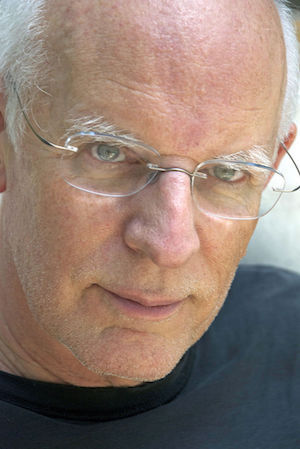
William McCranor Henderson is an American author whose writing explores the mutual influences of popular culture and literature, and the dark side of celebrity. Boston Magazine noted that his work displays "a real feel for the sad, ridiculous squalor in America, the tacky bars and beauty shops and motel swimming pools, the even cheaper dreams of the people who hang out at them." Henderson, according to The Philadelphia Inquirer, "has managed the estimable feat of breathing new life into the theme of adulation and emulation in a fame-happy era."
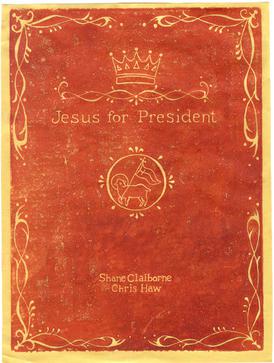
Jesus for President: Politics for Ordinary Radicals is a 2008 book co-written by the evangelical authors Shane Claiborne and Chris Haw, two important figures in New Monasticism. The book asserts that the countercultural themes in the ministry of Jesus, such as those of self-denial, are ignored by American Christians because they have become accustomed to exercising Christian privilege and are unwilling to give it up.

Trump Revealed: An American Journey of Ambition, Ego, Money, and Power is a biography of Donald Trump, written by Michael Kranish and Marc Fisher. It was first published in 2016 in hardcover format by Scribner. It was released in ebook format that year and paperback format in 2017 under the title Trump Revealed: The Definitive Biography of the 45th President. The book was a collaborative research project by The Washington Post, supervised by the newspaper's editor Marty Baron and consisting of contributions from thirty-eight journalists, and two fact-checkers. Trump initially refused to be interviewed for the book, then relented, and subsequently raised the possibility of a libel lawsuit against the authors. After the book was completed, Trump urged his Twitter followers not to buy it.
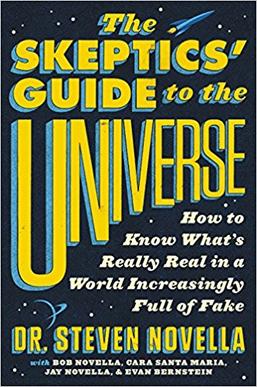
The Skeptics' Guide to the Universe: How to Know What's Really Real in a World Increasingly Full of Fake is a 2018 book meant to be an all-encompassing guide to skeptical thinking written by Steven Novella and co-authored by other hosts of The Skeptics' Guide to the Universe podcast – Bob Novella, Cara Santa Maria, Jay Novella, and Evan Bernstein. It also contains material from former co-host Perry DeAngelis.
Poet Laureate of Philadelphia is a civic position in the City of Philadelphia. The Poet Laureate has been described as an "Ambassador of Poetry". The holder of the position is expected to actively promote literacy and encourage expression in the city. As part of their position, they participate in service work, workshops and readings. One of their commitments is to mentor the Youth Poet Laureate of Philadelphia.
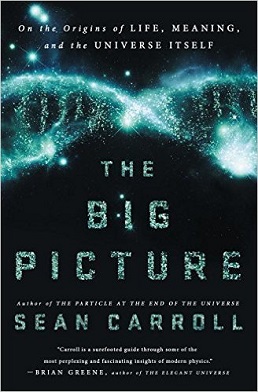
The Big Picture: On the Origins of Life, Meaning, and the Universe Itself is a non-fiction book by American theoretical physicist Sean M. Carroll. The book was published on May 10, 2016, by Dutton. In his fourth book, Carroll defends the argument that the universe can be completely interpreted by science, introducing "poetic naturalism" as a philosophy that explains the world.
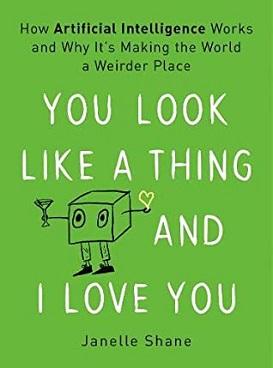
You Look Like a Thing and I Love You: How Artificial Intelligence Works and Why It's Making the World a Weirder Place is a 2019 nonfiction book by optics research scientist Janelle Shane. The book documents experiences the author and others have had with machine learning programs, and discusses what "intelligence" means in the context of "artificial intelligence" (AI).
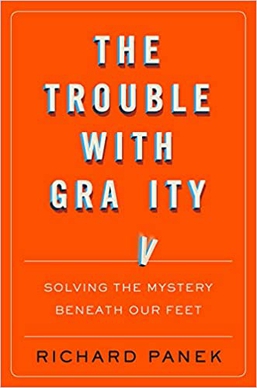
The Trouble with Gravity: Solving the Mystery Beneath Our Feet is a nonfiction popular science book by Richard Panek and published by Houghton Mifflin Harcourt on July 9, 2019.

Just Mercy: A Story of Justice and Redemption (2014) is a memoir by American attorney Bryan Stevenson that documents his career defending disadvantaged clients. The book, focusing on injustices in the United States judicial system, alternates chapters between documenting Stevenson's efforts to overturn the wrongful conviction of Walter McMillian and his work on other cases, including children who receive life sentences, and other poor or marginalized clients.

I Am God, originally published as Sono Dio, is an Italian novel by Giacomo Sartori about the Abrahamic God falling in love with a mortal woman. First published in 2016 and translated into English by Frederika Randall in 2019, it was a critical and commercial success.

The End of Loneliness is a 2016 German novel by Benedict Wells. It was published in February 2016 by Diogenes Verlag. It remained on the German bestseller list for more than 80 weeks. The English version was translated by Charlotte Collins and published in 2018 by Sceptre. It was Wells' first book to be translated into English.

Observer is a 2023 science fiction novel by American medical doctor and scientist, Robert Lanza, and science fiction author, Nancy Kress. It is Lanza's first novel and Kress's first novel written in collaboration with another author.
















